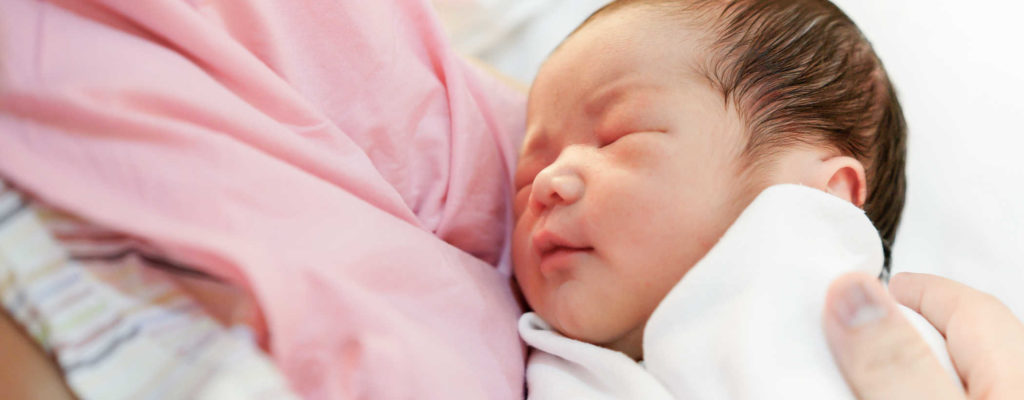
You cannot predict how long you will be in labor. The length of your labor will depend on:
Have you given birth before, and if so, when;
Are you standing upright or moving a lot during labor;
Is your cervix easily opened;
The uterus has strong or weak contractions;
Are you under anesthesia;
Position of the fetus;
Are you calm or not - comfort and relaxation will help you deliver labor faster.
Labor is a series of events or processes that take place over a period of more than an hour to about 24 hours or more. How long labor lasts depends on many factors. As a rule, labor is usually more prolonged when the first child is born. This is because first-time mothers' cervix and canal (vulva) are less flexible, so labor and delivery will take longer. For women giving birth for the first time, the duration of labor lasts from 12 to 24 hours, with an average of 14 hours. For women who have given birth before, labor lasts from 4-6 hours, on average 6 hours. Usually labor is divided into 3 phases.
Labor: Stage one
The first stage of labor occurs when the cervix opens and thins so the baby can move into the birth canal. This is the longest of the three stages of labor. Divided into two separate phases - early labor and pain. This first phase is divided into 2 periods: initial period and strong contraction period.
You will not be able to predict the length of the initial period. For mothers of the first time giving birth, the average time for this first stage is 6 to 12 hours, and this time will shorten for later births.
Strong contractions will be able to last up to 8 hours. For some other women, strong contractions can last longer. For mothers who have had a natural child before, this time will be shorter.
Labor: Stage two
During this stage, the baby is born and can last from a few minutes to a few hours. Mothers giving birth for the first time will experience a longer period of time at this stage and even longer if the mother is given a sclera at birth.
Labor: Third stage
After your baby is born, you should feel a sense of relief. You can hold your baby in your arms or put your baby on your tummy. Please cherish this moment. However, a lot more will happen. During the third stage of labor, the nurse or midwife will cut the placenta and make sure the bleeding is under control.
If you still have concerns about this issue, please consult your doctor or pediatric specialist for prompt advice and answers.
Natural methods to help relieve pain during labor
Relax
The most important thing to ease labor pain is that your mind is relaxed. This is very simple - when you're afraid of pain, your body tenses up, worsens the pain, and your body reacts again by tense up and the cycle just keeps making you feel like a baby is the most painful thing in the world. So, relax your mind before you want to relieve pain , pregnant mother.
Breath
To relax, you must pay attention to your breathing, just like when you lift weights. Whether you're breathing deeply or panting, the more you notice your breathing, the more relaxed your body becomes.
Experts believe that at birth, if a pregnant mother groans with strong bass, it is better to scream at high tones (like in a horror movie!). Screaming only makes your throat tighten and contract. However, you are not always aware of it when you are in pain.
Change your posture
Half of all pregnant women admitted that changing positions greatly reduces pain . Do not be afraid to walk around, sit on a ball or do anything. Changing position is the way to promote labor faster.
Apply hydrotherapy
If you like, you can sit back and relax in the tub and let the warm water soothe your body (or just soak your body gently in the water). This therapy helps relieve pain and relax the body during labor. Today, many hospitals have a separate area for a bathtub. Many pregnant moms like to give birth under warm water, if you are born at home, you can also use the family bath. One note when using hydrotherapy is that you should keep the tap away from the vagina, avoiding pressure to push water into the vagina - uterus.
Massage
Don't underestimate the benefits of massage. With just the hands, the husband can help relieve pain and bring relaxation to pregnant mothers who are suffering from uterine contractions. However, there are a few notes about the massage position that men need to know, for example, in the abdomen should not use strong force, because the fetus is inside.
Imagine
During labor, just thinking of a beautiful blue beach in mind, pregnant mothers can reduce pain a lot. You can also try to imagine the process of labor before it happens.
Listening to music
If you are a music lover, you should try listening to some rhythmic pain relief, 14% of pregnant mothers have done so. More or less, a space blending with music will make the mother's body more relaxed.
Every pregnant mother experiences painful muscles during labor, but that experience can become a lot more pleasant if you use the simple but effective methods outlined above. Above all, a steady and relaxed mindset will help you get through it all.












